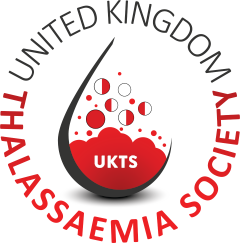Beta thalassaemia intermedia

Information
This condition is so called because it is “intermediate” in its clinical expression between beta thalassaemia trait (carrier) and beta thalassaemia major. Individuals with trait (carriers) are asymptomatic and the fact that they carry a gene for beta thalassaemia will only usually show up on specific blood test.
Those with thalassaemia major by definition need to have regular blood transfusions from infancy onwards in order to survive. People with beta thalassaemia intermedia, like those with major, inherit a thalassaemic (or poorly functional) beta gene from both parents, but for one reason or another can manage and often keep very well without the need for regular transfusions. There are various reasons why some people who have two beta thalassaemia genes produce an adequate amount of blood while others do not.
Meet Mina who is a 19 year old student living with beta thalassaemia intermedia – Read her story
For example
A person with intermedia may have two genes which are only mildly under functioning (?+ genes) so that they can produce sufficient haemoglobin to live comfortably on.
Alternatively, they may have inherited a combination of other genes which interact with beta thalassaemic genes and somehow improve their function or otherwise improve the amount of useful haemoglobin they can produce.
Quite often, however, there is no obvious reason why any given individual turns out to have intermedia rather than major; indeed there are several families in which one or two children have “full-blown” thalassaemia major while another, who must have inherited the same genes, can do without regular transfusion and behaves as an “Intermedia”.
People with beta thalassaemia intermedia will often run a haemoglobin level between 7 and 9g/dl; that is they are moderately anaemic but at this level are usually asymptomatic and thrive and grow normally.
The spleen is commonly much enlarged in children with this condition, and blood “pools” there, so that splenectomy is often offered to maximise the haemoglobin level that can be achieved. After splenectomy, prophylactic penicillin is given to prevent serious pneumococcal infection, and daily folic acid tablets also help to keep up the haemoglobin level as the bone marrow, which is working overtime, needs increased supplies of this vitamin.
It is usual for people with intermedia to need transfusions at some times in their lives. Infections can lower the haemoglobin so that blood transfusion is necessary, and transfusions are commonly required during pregnancy too. Leg ulcers are a frequent problem and these can be difficult to treat, again often requiring transfusions to heal fully.
Some people with thalassaemia intermedia who have been monitored during early childhood have been shown not to grow as quickly as expected, and to develop marked bony changes in the face resulting from bone marrow expansion, causing prominent cheek bones and upper jaw bone sometimes with dental problems. In these individuals a regular transfusion regimen has sometimes been instituted, much as for beta thalassaemia major sufferers, to optimise growth and to minimise these facial bone changes. This has often been continued until the late teens, and there is no doubt that the regimen has improved growth and reduced bone changes.
However, it has also brought with it all the side effects of transfusion seen in patients with thalassaemia major, with iron overload and also the risk (although quite small) of transfusion transmitted infections e.g. hepatitis. For these reasons, some units are trying to ‘wean off’ these patients from the regular transfusions, in the hope that their own bone marrow will start producing sufficient haemoglobin again. Most units are now less inclined than previously to start people with thalassaemia intermedia on regular transfusions, because as time has gone by, the problems associated with such a regimen have become increasingly apparent. However, the decision whether or not to start a given individual with intermedia on regular transfusions has to be made in the light of careful observation and serial measurements on that person, and after full discussion between the doctor and the family.
People with intermedia absorb large quantities of iron all the time from their diet, so that even when not receiving a lot of transfusions may need to use some Desferrioxamine by pump for periods in their lives. Despite the problems described that can arise from this condition, it is for many people a much better and less problematic one to have than thalassaemia major.
- About Beta Thalassaemia – Published by TIF
